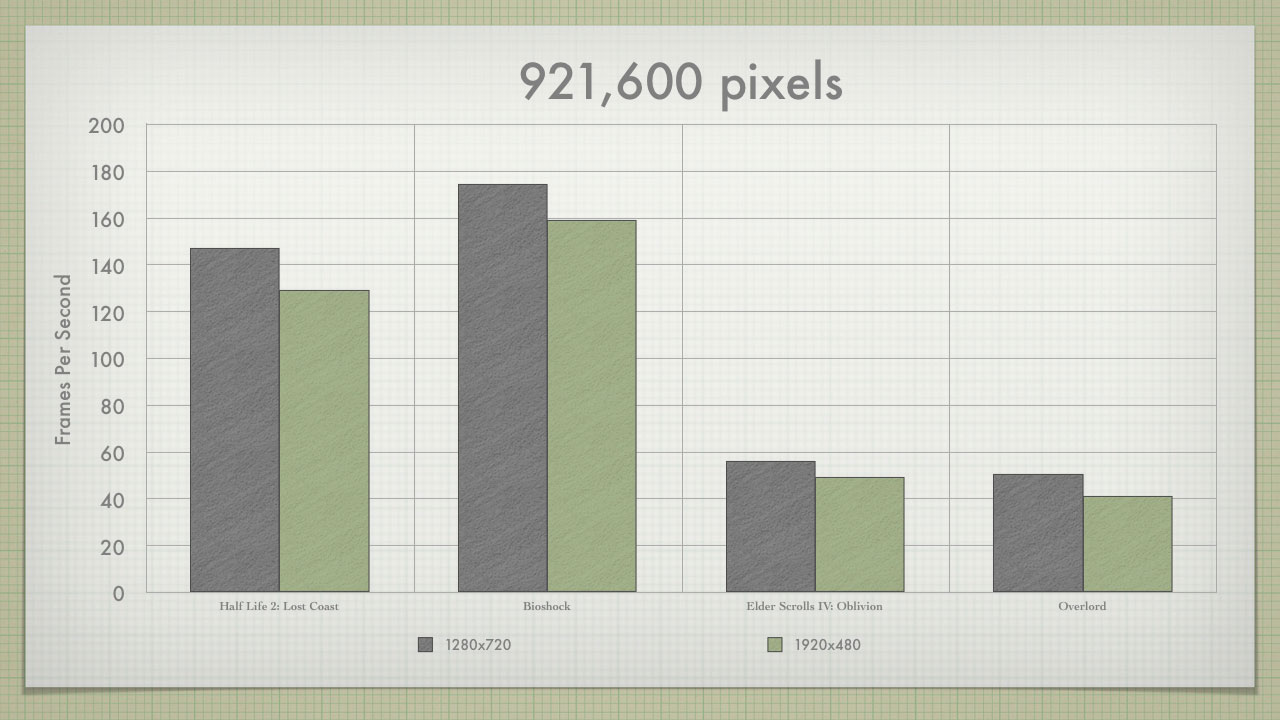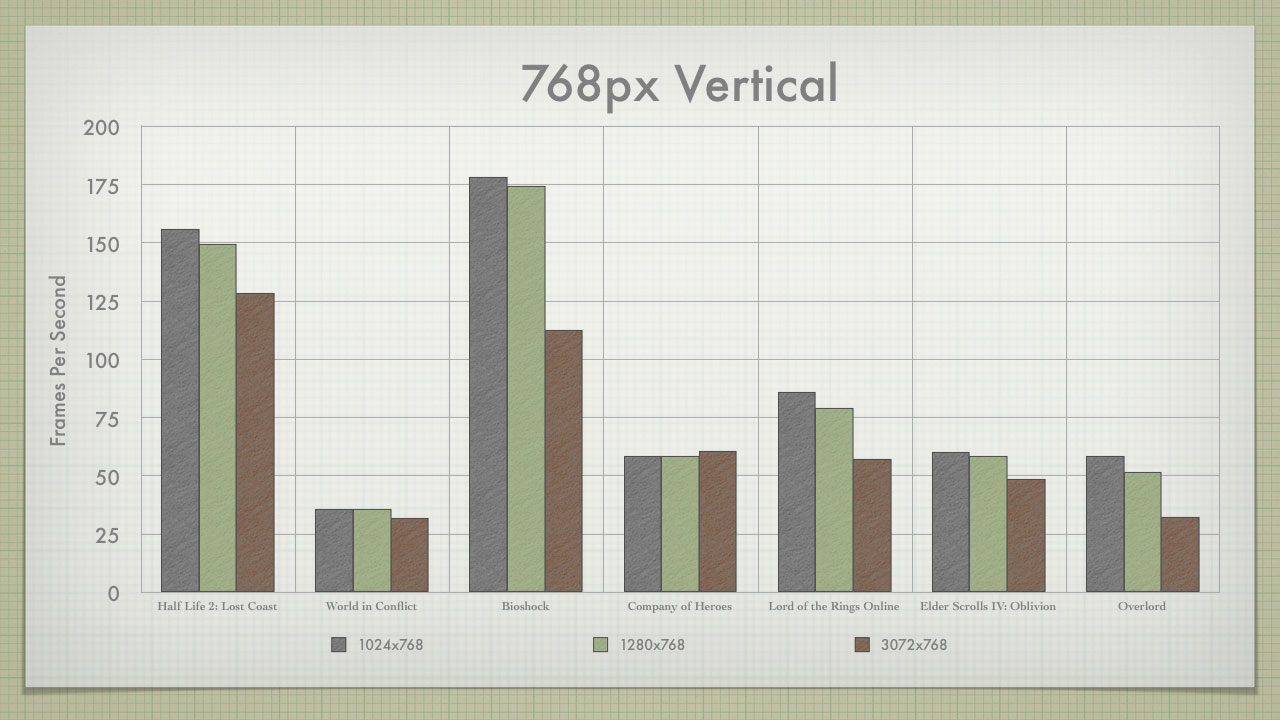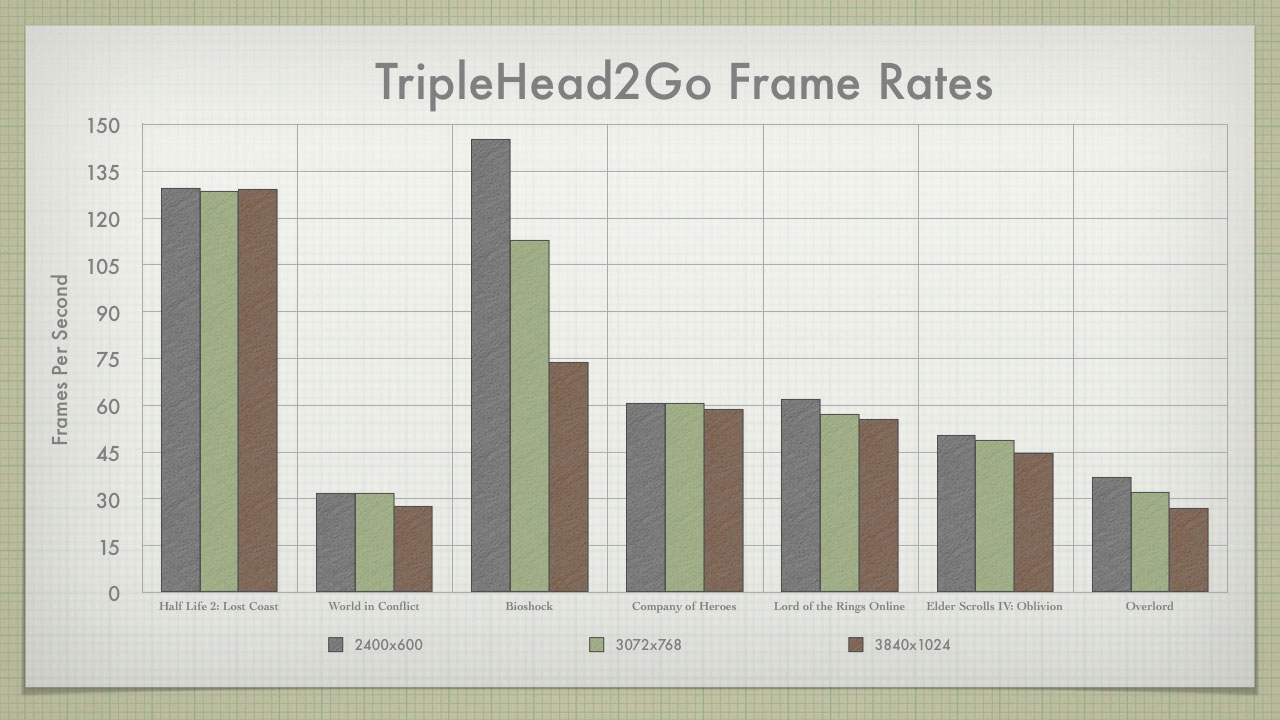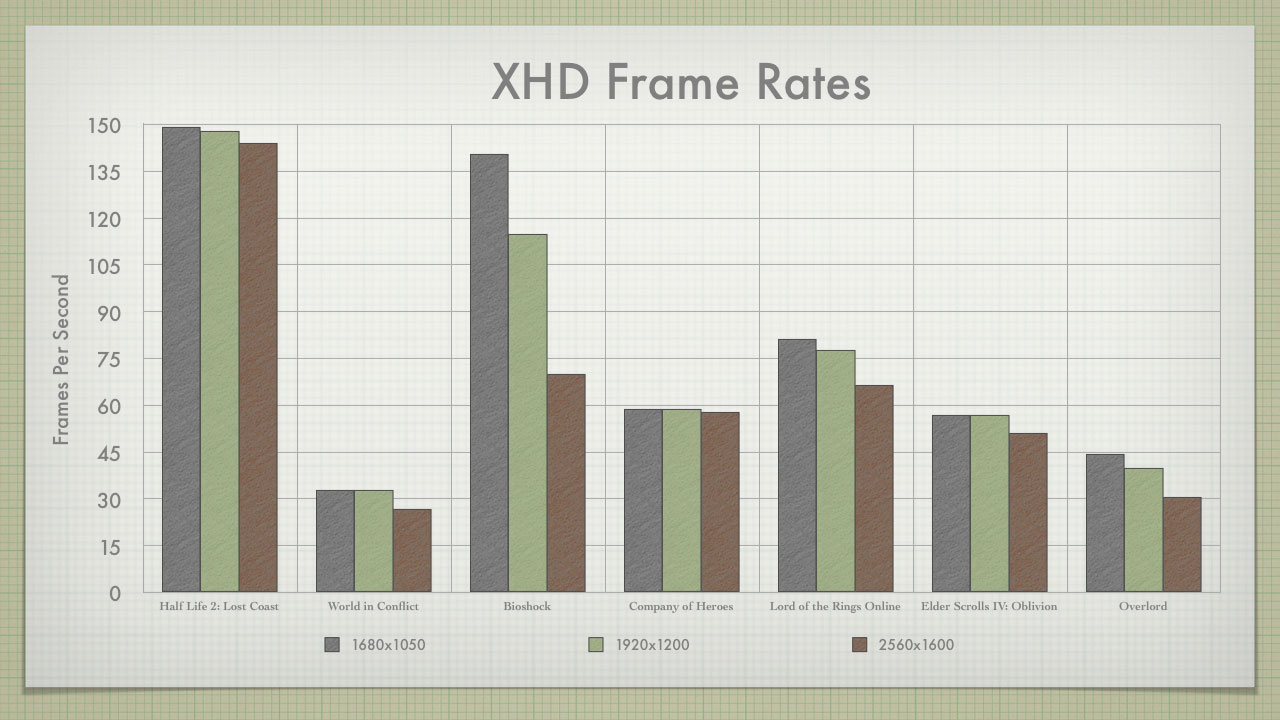Benchmarking Analysis: Widescreen vs. Surround - Details
921,600px & 768px Vert Resolutions
A funny thing happened on the way to benchmarking (reference), I realized that 1280x720 and 1920x480 both had the same number of pixels - 921,600. So, assuming that the GFX card is rendering the same number of dots, what is the impact in the increased number of on-screen objects?

The TH2G0 FOV is 26.6% wider than the 1280x720. Will TH2Go take a 26.6% hit on frame rate? Moving from widescreen to Surround resulted in the following drops in fps, even though it is the exact same number of pixels rendered
- Half-Life 2 - 18fps, 13.8%
- Bioshock - 16fps, 9.7%
- Oblivion - 7fps, 13.9%
- Overlord - 22.9%
While not a 26% drop, moving to a Surround Gaming FOV does bring with it a significant performance hit. As an additional look, the below graph shows the performance impact when moving from 4:3, to widescreen, to Surround. It follows the performance impact of the increasing FOV, while maintaing a 768px vertical resolution

In general, the move from 1024x768 to 1280x768 provides a small performance hit. This resolution increase represents a 25% increase in pixels, and a 12.6% increase in FOV. The move from 1280x768 to 3072x768 provides a more pronounced performance hit (as would be expected), with the pixel count increasing by 140% and the FOV increasing by 30.2%.
XHD & Surround Gaming Resolutions
One of the most frequent questions asked at the WSGF goes something like this, "I'm thinking of getting a TripleHead2Go. Can my system handle it?" This is usually followed up with, "If I have to play at a lower resolution, how good is the scaling?" The sister set of questions involves upgrading to the high end of widescreen panels (1920x1200 and 2560x1600).
In an effort to help answer these questions, I set about comparing the relevant scores. For TripleHead2Go, I compared the top three resolutions - 2400x600, 3072x768 and 3840x1024. For widescreen, I compared the three resolutions in NVIDIA's XHD marketing initiative - 1680x1050, 1920x1200 and 2560x1600.

For TripleHead2Go, the increase in resolution had a minimal impact on the fps. The one exception to this rule is Bioshock; but even then, the game was still above 60fps at the top end. The DTH2Go does a great job of scaling, but with a 9800GX2 you shouldn't need to consider dropping your resolution. The 7950GX2 provided consistent results up though 3072x768, and it is nearly two years old.
Remember, all of these scores were obtained with all settings maxed out. Consider LOTRO as an example. The game ran almost 60fps at 3840x1024 with "Ultra High" settings; dropping to "Very High" kicked the average frames up to 90fps. There are plenty of opportunities to make small tweaks to the quality settings, before the need to consider a drop in resolution. The bottom line is that once you take the hit for the Surround Gaming aspect ratio, increasing the resolution has a minimal impact.

Benchmarks in the XHD resolutions told a similar story. The impact of moving from 1680x1050 to 1920x1200 was minimal, while the next move to 2560x1600 provided a bit more of an impact. And, as with the top end of the TH2Go, lowering the quality settings a bit can keep you from having to drop resolution.
Future games that will tax your hardware are always on the horizon, but that shouldn't stop you from making an investment in the best monitor and viewing experience possible. A GeForce 9800GX2 is enough to power what is out there today (well, except for Crysis) at the highest resolutions.